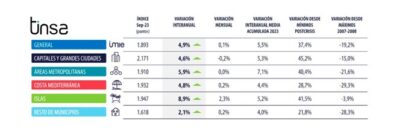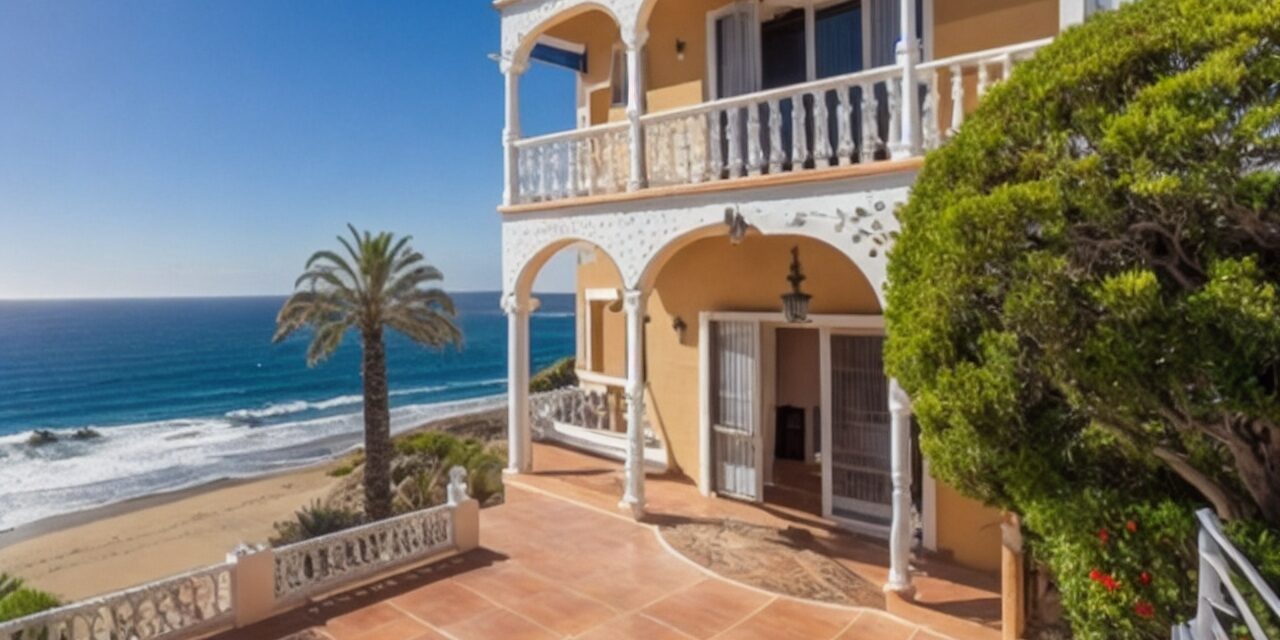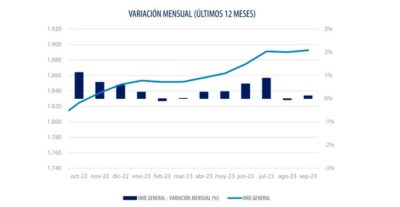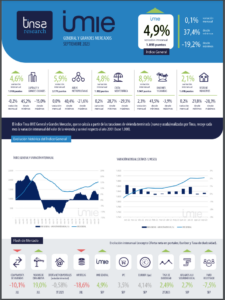In September, the price of housing, both new and used, saw a significant uptick of almost 9% in the Canary Islands compared to the same month of the previous year, as reported by the appraiser Tinsa, the leading independent provider of real estate valuation and appraisal services in Spain. The company specialises in assessing the value of residential and commercial properties, providing important insights into the real estate market. Tinsa’s services are widely used by individuals, businesses, financial institutions, and government agencies to determine the market value of properties for various purposes, including buying, selling, lending, insurance, and investment decisions.
However, despite this year-on-year increase, national housing prices across Spain inched up only 0.1% from the previous month of August. This development comes in the midst of successive interest rate hikes, resulting in more expensive financing, and a housing demand that, in certain locations, still outpaces supply, putting upward pressure on prices.
Tinsa notes that residential demand is decreasing more slowly among foreign residents, a trend seen across the entire island territory and in some Mediterranean coastal areas where foreign property purchases have had a significant impact during the first half of the year.
In addition to the rising prices in the islands, which continue their upward trend, prices also increased by 5.9% in metropolitan areas, 4.8% on the Mediterranean coast, 4.6% in capital cities and major cities, and 2.1% in other municipalities.
Tinsa explains that all the analysed groups showed a year-on-year deceleration in September, except for the island territories, which continue to exhibit price growth.
 When compared to August, the islands still lead in housing price increases with a 2.3% rise. Following closely are the Mediterranean coast and other municipalities, each with a 0.2% increase.
When compared to August, the islands still lead in housing price increases with a 2.3% rise. Following closely are the Mediterranean coast and other municipalities, each with a 0.2% increase.
In metropolitan areas, prices remained stable, and in capital cities and major cities, there was a 0.2% decrease in month-on-month terms.
In this context, Tinsa points out that the reduction in residential demand is happening gradually due to the impact of inflation on household savings and rising interest rates, which are moderating residential sales primarily due to decreased mortgage lending. However, real estate continues to serve as a savings channel.
Thanks to sustained employment rates, household solvency remains stable, and households will gradually regain their purchasing power as inflation moderates, according to the appraiser.
It’s worth noting that housing prices in the Canary Islands are only 4% below their record peak levels, while in Spain overall, housing prices are still 19.2% below the highs of the real estate boom. In September, this difference narrows to 3.9% in the Balearic and Canary Islands.
This data suggests a continued upward trend in housing prices in the Canary Islands, outpacing the national average, driven by a combination of factors including demand from foreign residents and a limited housing supply in certain areas. While the rest of Spain is still recovering from the effects of the real estate crisis, the Canary Islands seem to be on a different trajectory with prices only slightly below their peak levels.
__________
According to Tinsa, Housing Prices in the Canary Islands Continue to Surge, Defying National Trends
The average value of both new and used housing in Spain is now 4.9% higher than it was a year ago, with a 0.1% increase observed between August and September. However, this growth trend deviates from the national pattern, particularly in the ‘Islands’ region, encompassing the Balearic and Canary Islands, where prices surged by 2.3% monthly, in contrast to the stabilisation seen in most analysed groups (ranging from -0.2% to +0.2% in September).
Tinsa’s General and Major Markets IMIE (Property Price Index) recorded a monthly variation of +0.1% in September, resulting in a year-on-year price growth of 4.9%. This data confirms the trend toward stabilisation in residential prices, except in island markets, where housing continues to exhibit an upward trend.
The average value of new and used housing in Spain has seen a 19.2% decrease from the peak levels of the 2007-2008 period.
After the final figures for September were tallied, the year-on-year price increase for the third quarter of the year remains at 5%, unchanged from the preliminary data published in the IMIE Local Markets on September 29.
In September, all analysed groups showed a year-on-year deceleration in terms of price increases, except for the island territories, which are still experiencing dynamic price growth – a 2.3% increase between August and September, bringing the growth over the past 12 months to 8.9%.
“The reduction in residential demand is occurring at a slower pace among foreign residents. This particularly affects island territories and some areas along the Mediterranean coast, where foreign property purchases had a more significant impact during the first half of the year,” explains Cristina Arias, Director of Tinsa’s Research Service.
In terms of monthly variation, all groups, except the ‘Islands,’ are hovering around stabilisation, ranging from -0.2% for ‘Capitals and Major Cities’ to +0.2% for ‘Mediterranean Coast’ and ‘Other Municipalities.’
Over the past 12 months, ‘Metropolitan Areas’ stand out as the group with the most significant difference in value compared to September 2022, with a 5.9% increase after the ‘Islands.’ Below the national average, the ‘Mediterranean Coast’ saw a 4.8% variation, followed by ‘Capitals and Major Cities’ at 4.6%. The smallest and inland municipalities, grouped under ‘Other Municipalities,’ exhibited the smallest variation in value compared to a year ago at +2.1%.
“The reduction in residential demand is happening gradually. The impact of inflation on household savings and the effects of rising interest rates are slowing residential sales, primarily due to reduced mortgage lending. However, real estate continues to be a savings outlet,” says Arias, emphasising that sustained employment rates are maintaining household solvency, and households will gradually regain their purchasing power as inflation moderates.
It’s important to note that the value of new and used housing in Spain is still 19.2% below the peak levels of the real estate boom. In the ‘Islands’ region (combining the markets of the Balearic and Canary Islands), this difference narrowed to 3.9% in September. ‘Capitals and Major Cities’ also have a lower cumulative drop from the peak at -15%. In contrast, the average value on the ‘Mediterranean Coast’ is 29.3% lower than its peak, with ‘Other Municipalities’ close behind at -28.3%.
These indicators suggest that the Canary Islands continue to experience a rise in housing prices, defying the national trend of stabilization. This trend is driven by factors such as demand from foreign residents and limited housing supply in certain areas. While other regions of Spain are still recovering from the effects of the real estate crisis, the Canary Islands appear to be on a different trajectory, with prices only slightly below their peak levels.












